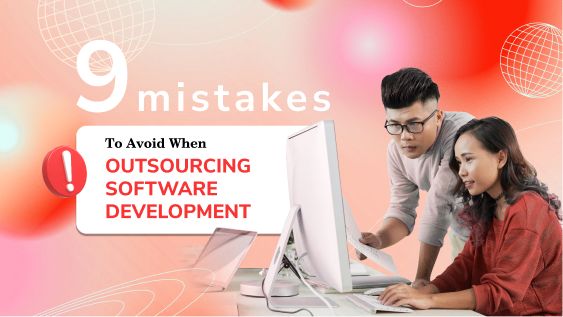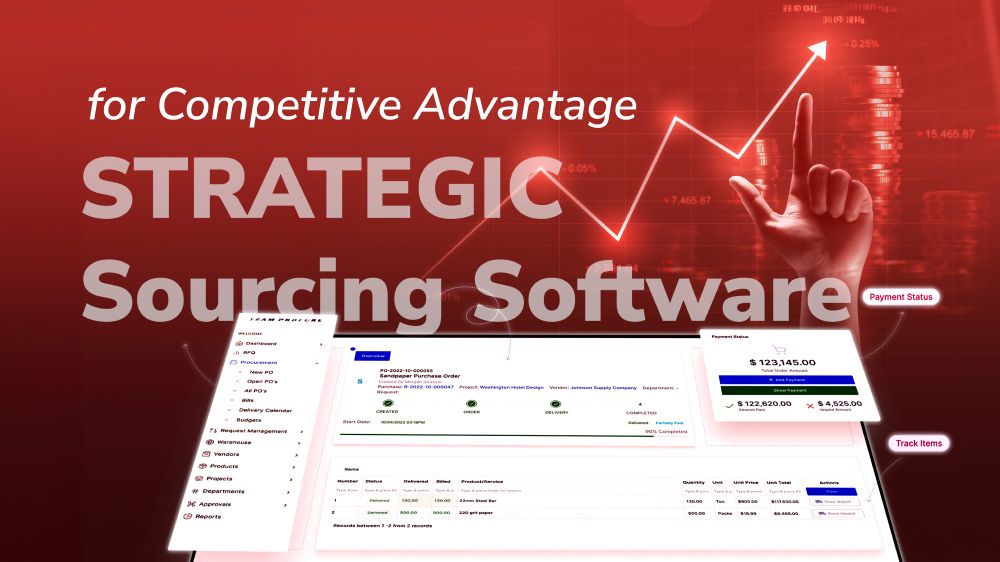Top 12 Common Outsourcing Problems and How to Resolve Them

Content Map
More chaptersWith the global market size up to 92.5 billion dollars in 2019, outsourcing industry demonstrates the unbelievable growth rate and development potential.
Software outsourcing is expanding at an incredible speed as businesses realize the importance of having an external workforce that can give them an extra edge in competition, especially as technology is advancing at an amazing speed. Instead of training their in-house team and spending resources on recruiting and retaining employees, companies now turn to third-party vendors to fulfill their software needs and requirements.
In short, the benefits of using outsourcing models include:
- Release hiring stress
- Quick access to specialized talent and needed resources
- Have time for core competencies
- Easily scale operations up or down
- Cost savings
However, every solution has its own problems, coming from many objective factors. Fortunately, almost all outsourcing issues are solvable problems. Let’s talk about the top 12 common outsourcing problems and the solutions to minimize these problems as you decide to outsource your software.
Key Takeaways
- Communication gaps, time zone differences, cultural barriers, quality control issues, and data security concerns are some of the common outsourcing challenges.
- Partnering with unreliable outsourcing partners can cost you more, both resources and time, and sometimes, delay your expected delivery date.
- While presenting certain challenges, outsourcing still offers significant advantages such as cost-effectiveness, shortened time to market, and hiring stress release that may outweigh its drawbacks for businesses regardless of size.
Top Outsourcing Problems and Expert Solutions to Get Through Each
Businesses can face a wide range of problems when using outsourcing services. Besides some common issues that you may easily guess or have experienced at least once during cooperation with third-party vendors, below we also uncover outsourcing problems that you did not expect.
Problem #1: Goal and Expectation Mismatch Due to Miscommunication

Imagine walking through everything and expecting your vendor to be on the same boat, just to realize the next day that we were thinking of two totally different things. “No, I want a product that works well with this platform, not especially for this platform.” “We are sorry, that will take a few days to fix.” You don’t want situations like this to happen, right?
Miscommunication is the main cause of this mismatch trouble. Sometimes, you tend to leave out certain things that are “common sense” to you, which means “should not even be talked about because there is no other way to do it” - which doesn’t mean the same for the other party. Have you ever written a piece of story that flows perfectly in your eyes, but your readers get confused while reading it? This is exactly the same thing.
Taking the initial stage of discussing specific requirements slightly, you may pay a heavy price. Depending on the contract, miscommunications can cost you more, both resources and time, and sometimes, delay your expected delivery date. This is frightening for businesses that rely heavily on being the earliest player in the field.
So, how do we avoid this?
Just be very clear and transparent about what you want, need, and expect from your third-party vendor. It is easy to say so but not to do. As each individual has different common sense like above explanation, try to make every requirement as obvious as possible. Double checking - no - triple checking with your team to make sure everything is easy to understand and nothing is left out, and go through your plan and expectations at least weekly with your vendor to make sure everything works out in the end.
Problem #2: Time Zone Differences

If you are outsourcing your software offshore, it is understandable that your time zones will be different, and sometimes you cannot reach your partner in time. Not all offshore companies offer 24/7 customer service. What if you have a game-breaking bug that you find out 3 hours after their office hours, and the pilot is the next day? Who should you turn to ask for help?
This is why you should never leave everything at the last minute. Always ask your partner for emergency contacts and if there is any way to fix issues after hours. Even though most (hopefully all) vendors do not work 24/7 to support all your errors, they can make ways to solve them in the shortest amount of time for emergencies.
Of course, working with a vendor that is closer to your time zone is ideal, but not everything is perfect. Maybe your best-suited vendor is across the map, where you only have a few hours of clashing. Then, it is time to optimize those precious hours. There are a few things that you can do to improve work efficiency while working in different time zones:
- Have a clear time zone visual: Figure out your working hours and how much they clash with your vendor or vendors if you are working with multiple partners. Keep this information as a reminder for all your processes.
- Visit your partner once at least every other month: This is to understand more about the culture of your partner’s workplace and whether they are more active in the morning, afternoon, or at night. Also, it’s always helpful to learn about your partner’s working culture.
- Daily communication: Set up a good time for daily meetings. It does not have to be long. Your vendor should at least try to work around the clock to meet your requirements, and you should as well.
Problem #3: Having No Control Over Vendor’s Staff

Most of the time, the recruitment process is done through your vendor. This means you might have a minimum say in who to recruit and why. You are leaving your important workload in the hands of people that you barely know. Are they really qualified? How can I check the quality of the work? What if the staff quality is unknown? What if they change staff or key people?
Yes, outsourcing does take a heavy load off your back, but that doesn’t mean it does not affect you anymore. Heck, it probably affects you more now that you have to trust other people to deal with issues you can barely deal with. Your vendor also does not suffer the same risks you have, so how can you know that they are diligent with their recruitment process?
You can always attend the hiring process if you feel like it is absolutely needed. Also, be sure to choose an outsourcing provider with a history of successful projects - better if they are big projects from well-recognized companies. This means that their talent force is capable of handling large and complex projects.
Also look into what their expertise is as no company is perfect at every aspect of technology. Maybe they are known for IoT (Internet of Things), and you are going for a mobile app project? They might not be the best fit for you.
Problem #4: Outsourcing Your Weaknesses

Okay, this is a bit contradicting as you would want to outsource a department that you are lacking, meaning, it might be your weakness. However, this brings in a lot of risks as you cannot do proper quality control as how do you tell if they did a good job or not?
Behind an app are thousands of lines of codes - and if you do not understand them even on a surface level or don’t have the people to cross-check, how do you know the results are satisfying and there won’t be problems in the future? If you are outsourcing an Angular mobile app but have no expert to proof-check the final product, you might end up with a lot of bugs in the long run, or you might get low-quality software that might seem okay initially. Yes, you probably can ask your partner to improve the product, but it wastes time on both sides and makes you lose a lot of trust in between.
This means, you should always have at least someone who is good at their job on your side. If you have a long-term outsourcing partner, this should not be a problem as trust comes with continuous quality. But if you are dealing with a new partner, it is recommended to always have an expert on your side, or a third party who can proof-check the product.
Problem #5: Intellectual Property and Data Security Issues

If you know the term “trade secrets”, you know how important intellectual property and data security are. In a world where, some might say, “the winner takes all,” your trade secrets are your biggest weapon to success. Outsourcing means sharing this info with a third-party company, but how do you make sure that you have total control and security over all your data and IP?
The first step of every outsourcing project should be signing the NDA (Non-Disclosure Agreement). In this NDA, you must state each and every clause clearly with a transparent structure and punishment for violation in order to protect your data security.
You should also understand that the third-party partner is not your only risk. If data is leaked outside of their control, such as when the server gets hacked or when they suffer from a DDoS attack from malicious sources, your information is at risk. You should also include potential risks in your contract for any possible harmful outcomes. In addition, always make sure that your outsourcing vendor has the ability to protect themselves from these types of attacks before proceeding further.
Problem #6: Language Barriers and Communication Challenges

We all know that working with people who are fluent in the same language is one of the best ways to communicate. However, sometimes, you have to work with people across the globe where English isn’t their native language. Even if their native language is English, the dialect difference might cause some issues in understanding or just simply the use of language. So, how do we go about this?
The first thing you should do is to figure out if your outsourcing company is fluent in the language you are using. As the world is becoming more and more connected, it is not rare to find English-speaking talent in any part of the world. Even countries in Southeast Asia, like Vietnam, have long included English in their compulsory curriculum. In addition to verbal communication, you should always make a habit of double-checking through email or messaging apps so that there is no miscommunication due to mishearing or loss of connection.
Always check with at least two or more people. This way, you do not have to come into situations where you have two people argue over what was said and what was not. You should also visit your outsourcing partner to make sure that the experts you are working with are fluent in English and capable of understanding and following instructions.
Problem #7: Organizational and Regional Cultural Differences

The two biggest outsourcing issues that one should understand right away are: 1. You are outsourcing to another company, and 2. You are (probably) outsourcing to another country. These bring up organizational and regional cultural differences. Maybe your own employees are used to working 9-5, but the outsourcing company employees work from 12 to 8. What if your employees prefer one-on-one discussions, but your partner prefers to work as a group? The contrast between regional and company culture is actually more worrisome than you may think.
This is why ice-breaking sessions and training programs are very important when you first start working with a new outsourcing partner. Talk it out to understand how each other works and complement each other. Try to understand that there is not just one way to reach a goal.
Problem #8: Expectation Vs. Reality

Let’s be honest: Outsourcing companies tend to “over-sell” themselves when trying to negotiate a project. Have you ever seen those fake commercials everywhere on Facebook? Yes, one of those things. It is worth mentioning that not every external company applies the same overselling advertising formula. We do not equate any organization in the market. However, don’t rush to believe their marketing campaign without directly verifying it because the gap between expectation and reality is very large.
Okay, so the sweet talk is over, and hell breaks loose; now, how do you avoid this?
First, always check their case studies for their old projects. If they have worked with a big organization before, check if the organization credits or recommends your partner. Ask for their portfolio and check out their former products. If you happen to know someone who worked with your partner, that would be perfect! If your partner is starting to sound too good to be true, it probably is too good to be true. Be realistic with both your goals and expectations. Make sure that your contract covers any unexpected circumstances that might happen during the outsourcing project.
Another important factor before signing your outsourcing contract is to check if your outsourcing partner is financially stable enough to complete the project or cover any possible loss or delay that might happen. Check the country’s laws to see how they deal with negative results from an outsourcing project, and embrace yourself to prepare for even the worst result possible.
Problem #9: Loss of Control and Decision Making

When you are outsourcing with a third party, you might feel like you have too little or too much control over the decision making process. Obviously, you do not want to lose your decision-making rights, as the project is yours. However, is it right for your partner to come to you for every single decision? How much control is enough?
You might be able to trust in your partner’s ability to finish your project on time and with successful results. Yet, you want to make sure that the processing is transparent and that you are there for most of the development. On the other hand, you do not want to waste time going through every single decision or having to deal with every minor issue. Because it is very time-consuming, and you should put the matter in the hands of the professionals.
What if your opinion and your partner’s clash? Most outsourcing partners will give advice based on their experience, but the final decision is up to you. You can trust in their skills and experience or stay with your beliefs, but you should always look at the two sides objectively.
Talking about this outsourcing problem, we do not accuse third party vendors of abusing their power in the collaboration process. As service providers, they are responsible for limiting their authority over vital project decisions and only operate in accordance with customer requirements. Customers, on the other hand, are the individuals with the highest authority in the decision-making journey as it is their project.
So, make sure you don’t lose this benefit in any partnership situation throughout. Make sure that all the important decisions are yours to make and that you have control of everything, even if it’s minor. It doesn’t mean you have to review everything, but you should have a clear, daily report from your outsourcing partner for safekeeping, which also boosts reliability and makes the handover easier. Besides meeting face-to-face and communicating regularly, you can use project management tools like Trello to be easily in sync with each other and streamline projects.
Problem #10: Delivery Failure or Delay

The worst of all outsourcing issues is undeniably delay or delivery failure. If you have a public release date, this brings up not only traumas but loss of reputation. Chances are you will get compensation for failure or delay, but chances are… you won’t, or it won’t be enough. So, how do you deal with this?
First, only work with trustworthy partners. Do they have a 100% on-time delivery rate? If they don’t, why? Having a non-100% delivery rate is a big red flag when you are looking at outsourcing partners, even if you have worked with them in the past. Make sure that your contract states properly on the clause for delay for delivery failure. In addition, make sure to prepare for the worst. How are you going to regain your reputation or turn this thing around?
Moreover, you should always have your project ready way before the release date. There are many steps after software completion, for example, quality testing, test run, alpha and beta test, etc., and you should never leave your project completion date too close to your supposed release date.
Problem #11: Choosing the Wrong Outsourcing Business Model

A software development company usually provides customers with three main outsourcing business models, including a dedicated development team model, staff augmentation model, and project-based model corresponding to different target user groups.
- Dedicated software teams: Hiring third-party specialized staff to work exclusively on your projects directly at your office.
- IT staff augmentation: Hiring third-party specialized staff to work remotely on your projects without team management needs.
- Project-based: Hiring third-party specialized staff in the short term to work on defined tasks of your projects.
Of course, third-party partners will advise you on all service packages they have. However, do not rule out the possibility that some representatives from outsourcing companies tend to “upsell” you with service approaches that are beyond your needs.
Because of their significant overlaps and lack of outsourcing knowledge, beginners who lack previous project outsourcing experience easily fall into the state of being lost in the middle of nowhere and make wrong decisions.
Unlike other decisions in daily life, outsourcing relationships depend solely on the contract signed between the two parties. Any change from the contract causes both parties to be negatively affected, and in this situation, that negative effect is a loss of budget, time, and project efficiency. Choosing a service approach beyond your needs, you lose money on unnecessary items. Choosing a service approach that does not promptly meet needs, you accidentally create gaps in the development process, negatively affecting product quality and prolonging time to market.
What can you do to prevent this outsourcing problem then?
To not fall into marketing traps and choose the right outsourcing model, the best way is to understand your own needs. Find the most suitable answers to the questions, what are the needs of your business, what are you looking for third party providers for? Then proactively learn about the types of services that vendors provide as well as prepare a list of related concerns before meeting directly with them. Most importantly, always have a backup plan for all worst-case scenarios to quickly adapt to changes.
Problem #12: Hidden Costs

An attractive pricing model sounds appealing. However, don’t be too quick to celebrate because it could actually be a warning sign that ends up costing you more in the long run. Why? As you get what you pay for, the “too good to be true” outsourcing pricing structure raises concerns about the quality of service, making the outsourcing problem of hidden costs.
You cannot easily uncover these companies’ red flags at first glance. However, their signs will gradually become clearer day by day, especially after the stage of successful contract signing. Delivering low-quality work, adding unauthorized charges, or avoiding communication are some common cheating methods that untrustworthy firms may use to trick you.
The outsourcing industry is expanding at a rapid pace, and there are plenty of good choices for you to take. There are reliable partners who offer clients the time and material model, helping you avoid hidden costs as you pay only for the features that have actually been added.
So, don’t rush to sign a contract with any third-party vendor without considering more than three providers at a time. This may take much of your precious time of course, but the quality commitment is what you are going to get in the later stages. Instead of barely comparing IT outsourcing costs, don’t forget to contact them directly or even book meetings if needed to learn more about their service packages.
In Conclusion
It is worth understanding that even partnering with the most reliable outsourcing provider in the world also has the potential for unwanted problems. Outsourcing is generally still one of the ideal solutions to quickly access specialized experts and shorten time to market while ensuring product quality.
Successful outsourcing partnership is not only the contribution of each outsourced team but rather than the good coordination from both sides. In addition to quality services from third party vendors, customers themselves must also prepare themselves with the necessary resources to create favorable conditions for achieving the final goals.
The above outsourcing issues should be pinpointed and discussed before every outsourcing project to avoid any potential problems before, during, or after the software development process. There are other outsourcing problems that your company might face, but solving these top 12 issues will give you a higher chance of success for your outsourcing project.
Ultimately, knowing these issues, you will know how to handle them correctly before further difficulties occur. We hope that this article is helpful and will bring light to you as you continue on your next outsourcing project!
If you are looking for an experienced software development company to kick off your project or simply have other concerns related to outsourcing services, don’t hesitate to contact Orient Software for expert guidance.







